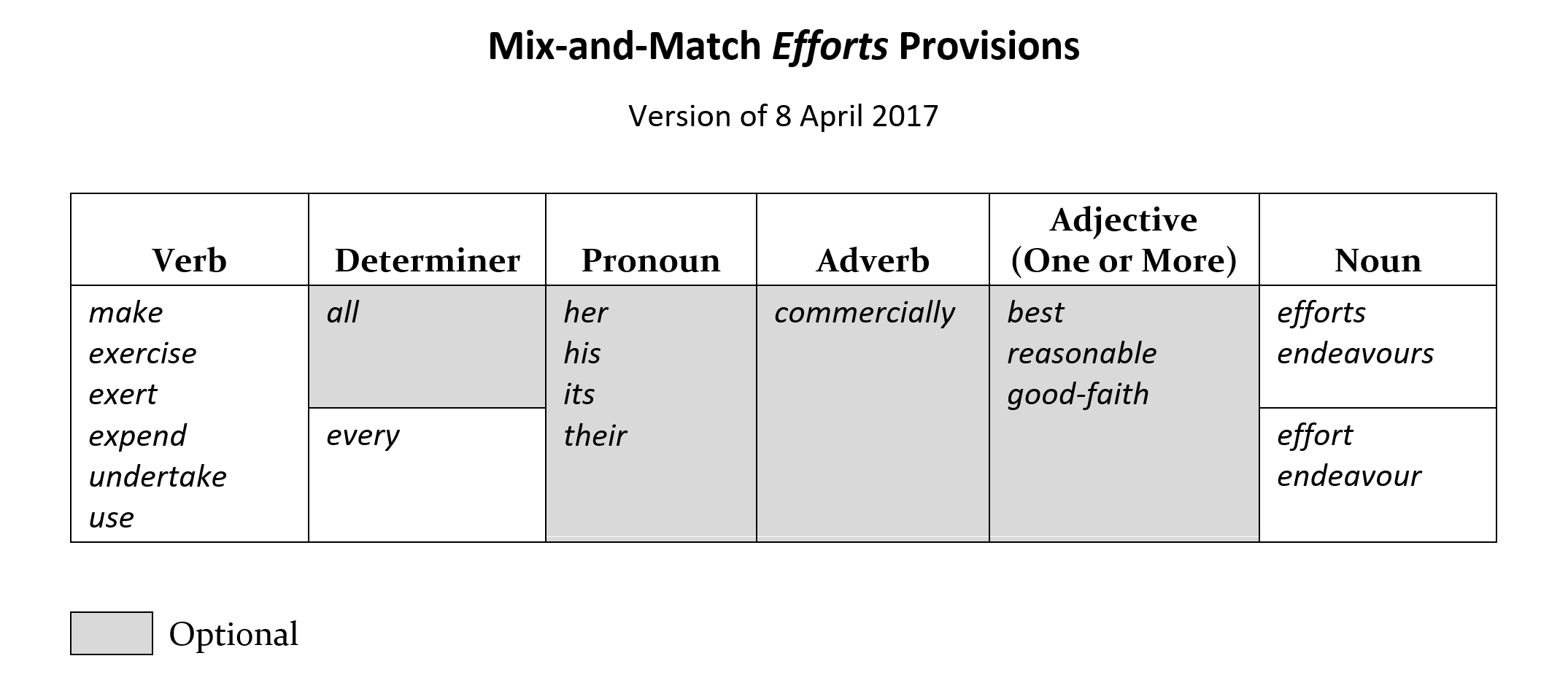 It’s another wild night chez Adams. As you might have figured out, I’m reassessing the whole efforts thing. I just banged out the chart above, as a way of showing the main permutations of efforts provisions.
It’s another wild night chez Adams. As you might have figured out, I’m reassessing the whole efforts thing. I just banged out the chart above, as a way of showing the main permutations of efforts provisions.
It’s a wild world of efforts. The chart doesn’t even cover it all, as you can have the modifier following efforts, as in efforts in good faith.
Of course, this chart is just to show what’s out there. Don’t you dare think I’m inviting you to indulge in your own mix-and-match efforts party. Repeat after me: Use only reasonable efforts.
Do you think I should include this chart in the fourth edition, along with a text description?

Hard to know if it should be included without knowing what the commentary on it will be. If you’re including it to say “a pox on all their houses”, not sure the chart helps much; if there is more nuance then the chart may be helpful?
I just updated the post to address this!
“Repeat after me: Use only reasonable efforts.” I figured this was the outcome, but wanted to be sure. In that case, not sure the chart adds much, unless clearly labeled as “there are millions of ways to get this wrong, here are some of them” :)
(Sorry, by the way, that I couldn’t do a chapter review for MSCD 4 as I did for 3 – life with baby is more time-consuming!)
In the context of telling the full gruesome story, I think the chart has modest value. The entire chapter, in effect, is window dressing, since the recommendation boils down to that one simple sentence.
And you’re forgiven!
Ah, in the context of a full chapter on the topic, then it probably makes some sense. Make sure to put the recommendation first so those of us who trust you can skim the rest, though ;)
Here’s what I think: the bottom line is that you recommend that drafters use the formula ‘reasonable efforts’, and no other formula, when the drafting goal is to make the reasonable person standard apply, with its necessary vagueness.
A drafter aiming for less vagueness can tinker with the boundaries and content of reasonableness (eg by setting floors and ceilings), but can’t discard the reasonable person concept in favor of another standard, one that is vague but not reasonable.
Rebutting every rejected variation individually would be tedious, as the rebuttal to each boils down to: obligations to make less than reasonable efforts or more than reasonable efforts are nonsensical.
I’m still wrestling with the idea you planted that in the phrase ‘reasonable efforts’, the adjective ‘reasonable’ is superfluous.